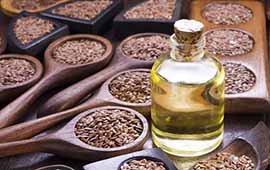Linseed oil confidently occupies one of the leading positions in the EU import market.
This oil is extremely demanded by customers due to its many beneficial properties: it contains a large amount of protein and fiber, vitamin B5 and magnesium. This product is an ideal diet food, as it helps to reduce appetite and saturate the body with the daily intake of beneficial acids. It should be admitted that the domestic production of flax in Europe is not very developed due to the lack of a sufficient number of sown areas.

At the same time, the production of its own linseed oil in the EU is available in almost every country, and in Europe, the purchase of imported flax seeds for further processing is developed.
Linseed oil supply and demand from 2015-2020
Crude unrefined flaxseed oil in the EU is gaining popularity every year. The oil from the seeds of this plant is used in both the food and construction industries, and the processed products are good animal feed. Since 2015, more than 30 thousand tons of seeds of this plant have been purchased in the EU annually in order to produce oil, meal and cake. At the same time, seeds are mainly purchased from Ukraine, Kazakhstan, Belarus, Norway and Russia – even China, which is traditional for this culture, has somewhat reduced the rate of flax export, so Ukrainian producers have a chance to occupy a free niche in the European market. Most often, Ukrainian flax is purchased in Poland, Belgium, Lithuania, Germany and Italy.
The maximum volume of imports from the CIS countries to Europe was recorded in 2018-2019. – then a total of 60 thousand tons of flax seeds were supplied to Europe. At the same time, the export of flaxseed oil from the EU does not change from year to year, and is equal to about 42 thousand tons. In general, it was during this period that the volume of world exports of flaxseed oil was at its maximum – 130 thousand tons.
Already by 2020, the market had its own peculiarities, due to which the number of purchases of flax seeds decreased. This is all due to the drought, which led to a decrease in yields. However, experts predict that even with this feature taken into account, the supply of flax will be in demand on the EU market.

Dynamics of prices for flaxseed oil 2015-2020
Europe sets strict requirements for the quality of the imported product. In particular, it is indicated that flax should be grown without the use of additional growth-stimulating drugs, since some components of such agents can be harmful to human health. In order for the products to meet these requirements, it is necessary to attach an expert opinion with an appropriate analysis to it, and only under such conditions farmers can count on the successful sale of their products to Europe. It should be noted that flax is processed less inside Ukraine, since the country lacks such capacities. At the same time, this culture can only be realized from the producers’ own warehouses, since Ukrainian elevators do not accept this culture for storage.
We will separately stipulate the features that the seeds must correspond to for successful sale. The characteristics of quality flax are as follows:
- Humidity up to 9%,
- trash impurities – 2%,
- oil impurities – 4%,
- oiliness level – not less than 35%.
At the same time, this culture does not need large costs for cultivation. But the prices for flax continue to grow every year and from 2015 to 2020 remains at the level of 8-10 thousand hryvnia per ton.






